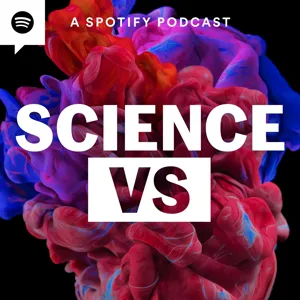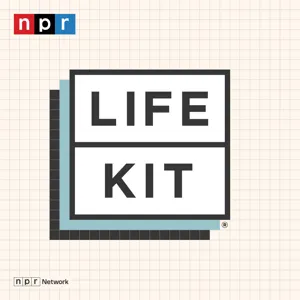Podcast Summary
Vaping: Fun Alternative or Health Hazard?: Despite concerns over potential health risks, many people continue to use vapes for enjoyable flavors and social reasons. However, studies suggest vaping could be more dangerous than initially thought, with potential risks including lung damage and increased likelihood of depression and anxiety symptoms.
Vaping, which was once seen as a healthier alternative to smoking cigarettes, has become a cause for concern due to its increasing popularity among young people and potential health risks. Comedian and inspirational vapress Nina Aoyama shared her personal experience with vaping, describing it as a fun and flavorful alternative to smoking. However, she acknowledged the concerns raised by health officials and governments regarding the potential health hazards, especially for young users. According to the FDA and CDC, about 1 in 10 middle and high school students are vaping, and many adults are also using vapes. Some studies suggest that vaping could be more dangerous than initially thought, with potential risks including lung damage and increased likelihood of symptoms of depression and anxiety. Despite these concerns, many people, including Nina, continue to use vapes for various reasons, such as the enjoyable flavors and the social aspect. It's important to stay informed about the potential risks and benefits of vaping and make informed decisions based on credible scientific evidence.
Study shows vaping leads to respiratory symptoms: A study found that vaping more frequently increases the risk of experiencing respiratory symptoms like coughing and phlegm production in young adults, highlighting the need for further research on long-term health effects.
Vaping involves inhaling aerosols, not just vapor, and the potential health risks associated with it, particularly for young people, are a cause for concern. A study conducted by Dr. Michael Chaitin recruited over 3,000 participants via social media and monitored their health for up to a year. The results showed that the more puffs taken on average, the higher the likelihood of experiencing respiratory symptoms such as coughing and phlegm production. These symptoms are not normal for young adults and warrant further investigation into the potential long-term health effects of vaping. It's important to note that while vaping was introduced as a safer alternative to smoking, more research is needed to fully understand its impact on health.
Study links daily e-cigarette use to respiratory symptoms: Daily e-cigarette use may cause coughing, wheezing, and could be early signs of COPD. Some symptoms may be due to e-cigarette flavors containing harmful chemicals like diacetyl, which can lead to 'popcorn lung'.
A study by Michael Blaha found that daily e-cigarette use is linked to respiratory symptoms, including coughing and wheezing. These symptoms could be early indicators of more serious lung conditions like chronic obstructive pulmonary disease (COPD). The study also noted that not all vapers experienced these symptoms, with about one-third reporting none. The cause of these symptoms may be related to e-cigarette flavors, which are made from a complex mixture of chemicals. While some of these chemicals are safe for consumption, they may not be safe when inhaled. For instance, diacetyl, which gives a buttery flavor, has been linked to a lung condition called "popcorn lung." Governments around the world are considering bans on e-cigarette flavors in response to health concerns. It's important to note that more research is needed to fully understand the long-term health effects of e-cigarette use.
Inhaling Substances vs. Eating Them: Different Risks: While some substances are safe to consume orally, inhaling them can pose unique risks to lung health. Researchers study individual flavorings to assess their potential impact.
Just because a substance is safe to consume orally, it doesn't mean it's safe to inhale. The example given is diacetyl, a chemical used to give foods and vapes a buttery flavor. While it's generally safe to eat, high inhalation doses have been linked to serious lung injuries. This is because the lungs are not equipped to detoxify inhaled substances as effectively as the digestive system. Researchers like Alona test individual flavorings to assess their potential impact on lung health. For instance, cinnamon flavoring was found to corrode plastic and inhibit the function of cilia, the structures that help sweep mucus out of the lungs. These findings suggest that inhaling certain flavorings could make it harder for the lungs to clear mucus, potentially leading to respiratory issues. However, more research is needed to determine if these effects occur in the human body.
Vaping: Lung and Brain Damage Concerns: Vaping can harm lungs with tiny particle inhalation and potentially impact brain's reward system, leading to addiction. Long-term effects and mechanisms are still being researched.
Vaping raises concerns not just for lung health, but also for potential brain damage. Although vaping products undergo safety testing in labs using petri dishes and mice, the fact that people have already tried these products and potential harms are only discovered later is frustrating. Vaping involves inhaling tiny particles, which can damage the lungs like tiny grains of sand. A recent study even found more inflammation in the lungs of vapers than cigarette smokers. Furthermore, vaping could potentially impact the brain. During our discussion, we spoke with Melissa Herman, an associate professor in pharmacology at UNC Chapel Hill, who explained that vaping may affect the brain's reward system and potentially lead to addiction. The exact mechanisms and long-term effects are still being researched, but it's important to be aware of these potential risks. So, while vaping might seem like a cool or harmless alternative to smoking, it's essential to consider the potential impacts on both our lungs and brains.
Nicotine in supposedly nicotine-free vapes and its impact on mental health: Research is ongoing to understand if nicotine use contributes to depression or if people use it as a coping mechanism, while concerns persist about nicotine in supposedly nicotine-free vapes.
While vapes can provide a higher dose of nicotine than cigarettes, there are concerns about the addictive substance being present in supposedly nicotine-free products. Furthermore, there is an ongoing debate among researchers about whether nicotine use contributes to depression or if people turn to nicotine as a coping mechanism for existing mental health issues. Researchers like Melissa are using rodent models to study this correlation, as the cultural factors influencing human behavior can complicate the issue. However, it's important to note that individual experiences with nicotine and mental health may vary.
Mice enjoy vaping and it affects their reward system: Mice enjoy vaping and over time, nicotine exposure can impact their reward system, potentially leading to addiction in humans due to increased dopamine release
While rodents don't voluntarily smoke cigarettes due to their understanding of smoke's toxicity, they do enjoy vaping when given access through specially designed chambers. Researchers, like Melissa, have discovered that over time, nicotine exposure affects the central amygdala in mice, which is responsible for processing emotions. This could potentially have implications for humans, as there is evidence suggesting nicotine may impact our reward system, leading to increased dopamine release and potentially addiction. This reward system functions differently than, for example, the enjoyment of a flower, as nicotine's effects are immediate and persistent, leading to a potential overstimulation of the reward center in the brain.
Potential Risks of Vaping: Vaping can affect brain's reward system, potentially leading to depression, and harms respiratory system, despite being safer than smoking cigarettes.
Vaping, while considered safer than smoking cigarettes based on current data, is not without risks. Repeated use of vaping products can lead to changes in the brain's reward system, potentially reducing enjoyment from various sources, including nicotine itself. These changes could contribute to an increased likelihood of developing depression. Furthermore, vaping harms the respiratory system, although not to the same extent as smoking cigarettes. While vaping is generally considered safer than smoking, it's essential to remember that it still poses health risks.
Vaping: Personal Choice or Harmful Habit?: While acknowledging potential harm, some individuals continue to vape due to personal reasons and conflicting information, highlighting the need for scientific understanding in informing personal decisions
Despite growing concerns about the health effects of vaping, some people continue to use it, citing various reasons such as normalization and personal choice. Wendy, a guest on the Science Versus podcast, shares her perspective on her vaping habits, acknowledging the potential harm but expressing her reluctance to quit. She compares vaping to alcohol and vegetables, implying that the presence of conflicting information may lead individuals to make excuses for their behavior. The episode, which includes interviews with numerous experts, explores the science behind vaping and its potential risks, as well as the motivations of those who continue to use it despite the evidence. The podcast emphasizes the importance of understanding the complexities of individual choices and the role of scientific research in informing personal decisions.




